18 Forgotten Furniture Styles That Defined Mid-Century Suburbia
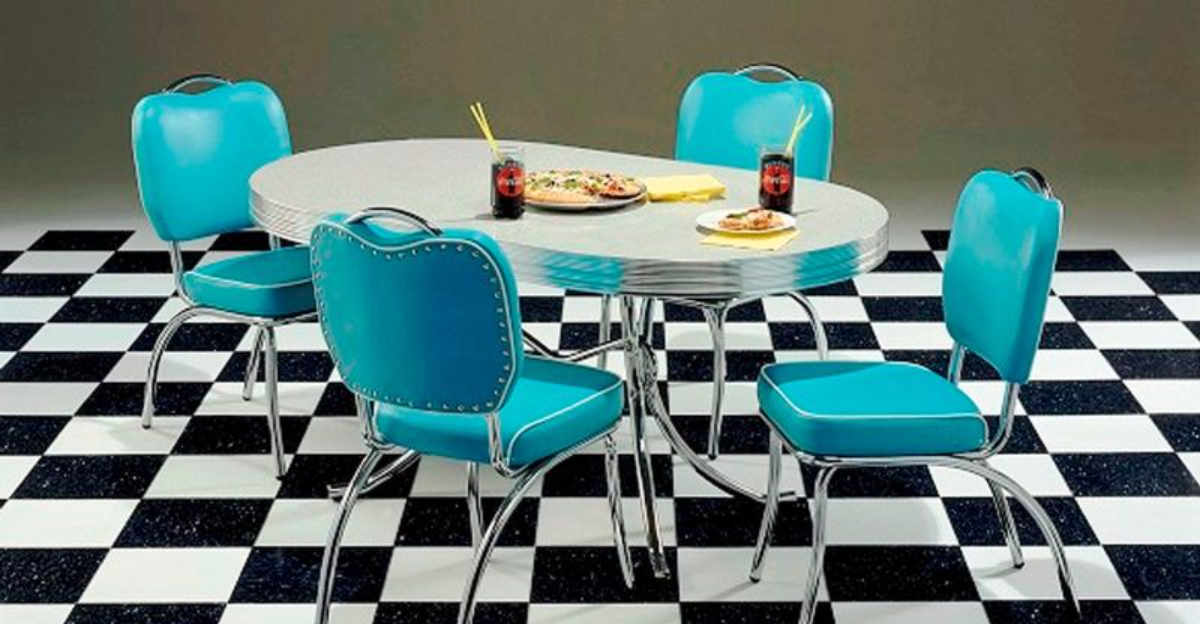
Remember that unmistakable vibe in our grandparents’ homes—the one you couldn’t quite name, but instantly felt? That cozy, stylish, slightly mysterious charm came straight from the post-war design explosion of the 1940s to the 1960s.
This golden age of furniture brought sleek lines, tapered legs, and bold patterns into American suburbs, turning houses into modern showcases of optimism and innovation. I still remember being a kid at my grandmother’s house, tracing my fingers along the curved arms of her avocado-green sofa and spinning the knobs on her starburst clock like they were treasure.
These pieces weren’t just furniture—they were statements, full of character and stories. Mid-century design was playful, practical, and unafraid to dream. Now, let’s take a stroll down memory lane and rediscover those forgotten gems that made every living room feel like something out of a retro magazine—because charm like that never truly goes out of style.
1. Boomerang Tables
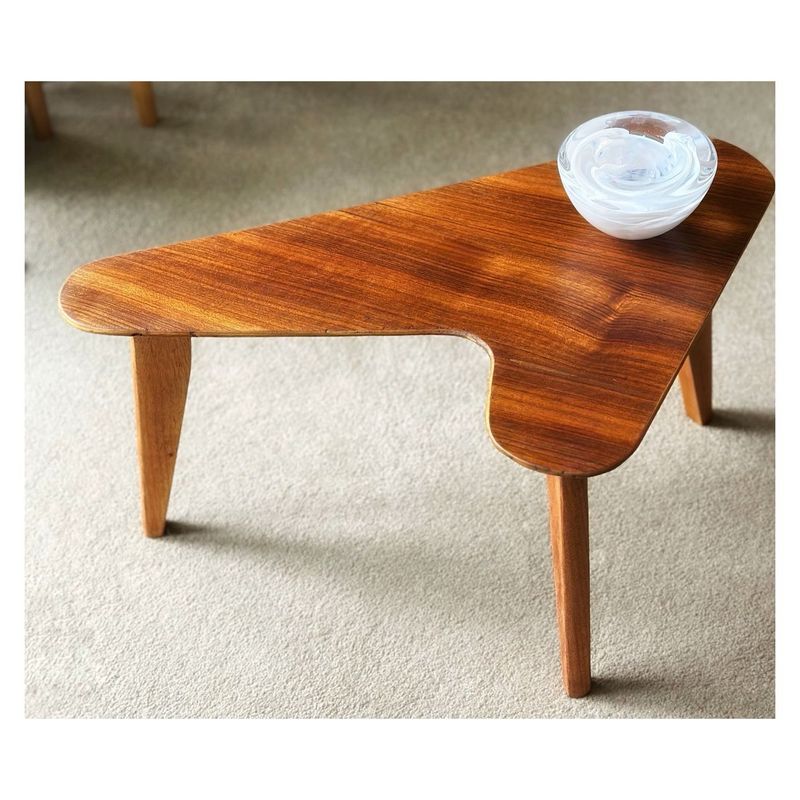
My aunt Dottie had this kidney-shaped coffee table that we kids called ‘the banana.’ Little did I know it was actually a boomerang table, one of the quintessential pieces of atomic-age design!
These asymmetrical wonders featured curved edges resembling their namesake weapon, often supported by hairpin or splayed wooden legs. Manufacturers like Heywood-Wakefield pioneered these playful shapes, which perfectly complemented the free-flowing layouts of ranch-style homes.
The boomerang wasn’t just for coffee tables—end tables, dining tables, and even desk surfaces adopted this whimsical form that seemed to capture the optimistic spirit of post-war America.
2. Tulip Dining Sets
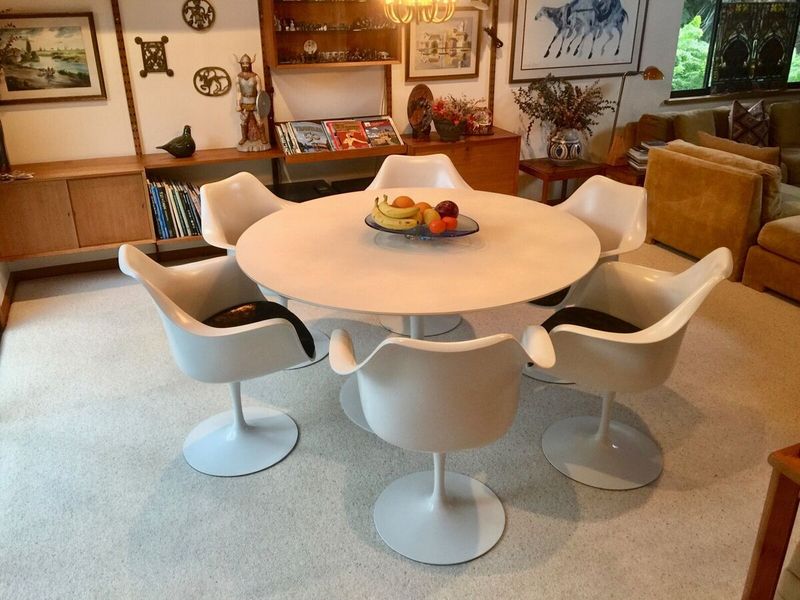
Swooping in like a space-age dream, tulip dining sets transformed American eating spaces with their pedestal bases and smooth, unified forms. The first time I saw one at my neighbor’s house, I thought it belonged on the Starship Enterprise!
Designer Eero Saarinen created this revolutionary style to eliminate what he called the ‘slum of legs’ under traditional tables. The single pedestal base, flaring upward like a flower stem, supported circular or oval tabletops of marble or laminate.
Matching chairs featured similar one-piece construction with molded fiberglass seats, often upholstered in vibrant vinyl. These futuristic sets eliminated corner legs entirely—much to the relief of shins everywhere.
3. Pole Tension Lamps
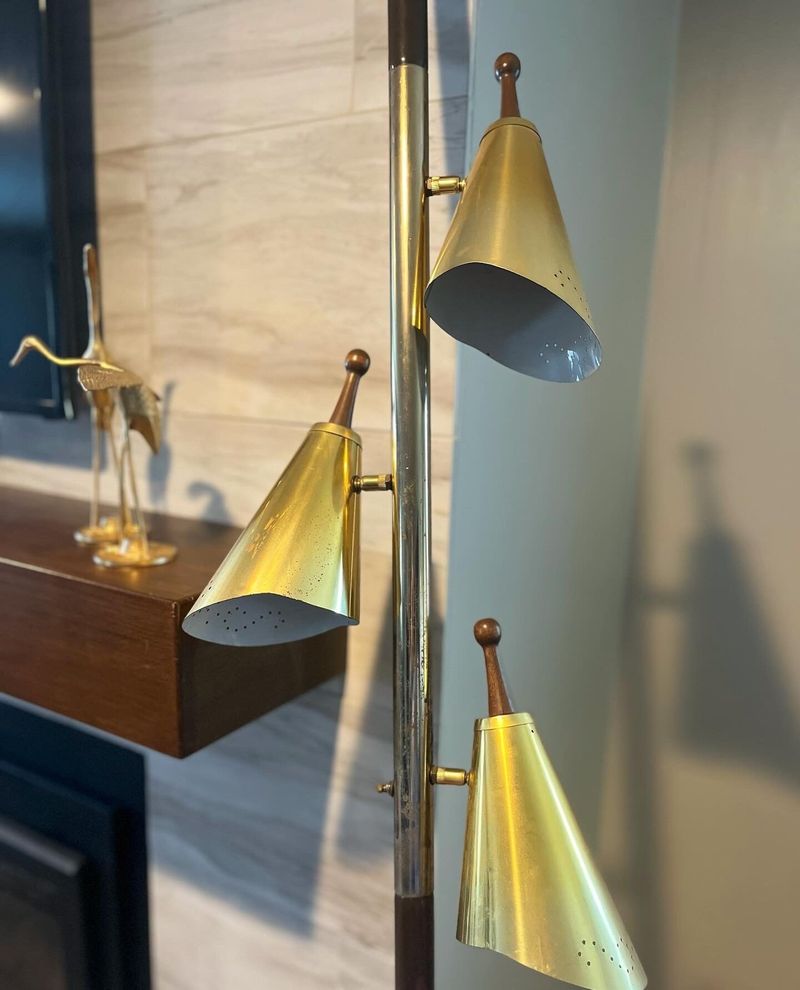
The magic of physics turned into lighting! Pole tension lamps were the Swiss Army knives of mid-century illumination. My grandfather installed one in his den that reached from floor to ceiling like Jack’s beanstalk.
These ingenious fixtures used spring-loaded poles that pressed between floor and ceiling, requiring no permanent installation—perfect for renters or the decoration-fickle. Multiple adjustable lamp heads could be positioned in any direction, creating pools of light exactly where needed.
Often sporting colorful fiberglass shades in cone or flying saucer shapes, these versatile lamps became the go-to solution for homes embracing the new open-concept living spaces where traditional wiring couldn’t reach.
4. Gossip Benches

Before smartphones kept us connected, the gossip bench served as command central for neighborhood news. Grammy’s telephone bench sat in her hallway, where she’d perch for hours chatting with her bridge club friends.
This clever hybrid combined a small seat with an attached side table designed specifically to hold the family telephone. Some models included a drawer for phone books or a shelf underneath for directories. The compact design saved space while creating a dedicated spot for those important calls.
Manufacturers crafted these conversation stations in various woods with vinyl cushions, often incorporating decorative wrought iron or brass accents. They vanished almost completely when cordless phones made stationary telephone furniture obsolete.
5. Parson Tables
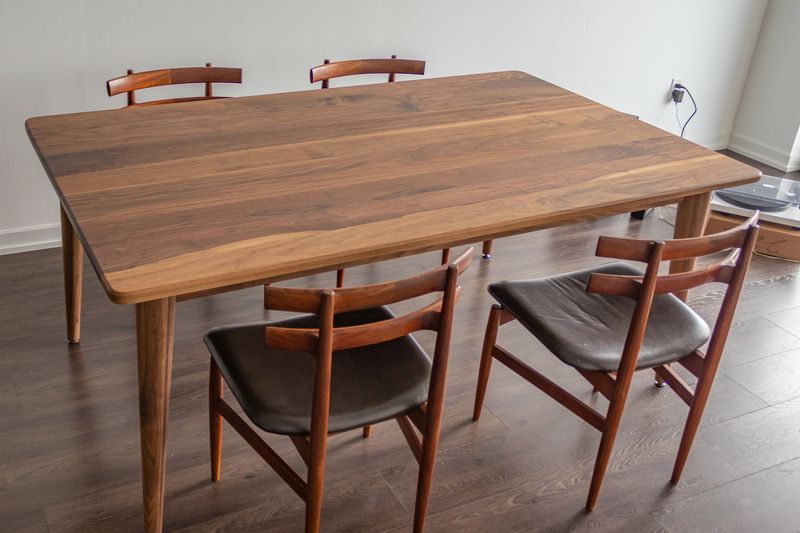
Square corners ruled the day when Parson tables marched into suburban homes across America. I scraped my knees countless times on my parents’ dining room version—those perfect 90-degree angles were unforgiving!
Originally designed at the Paris Parsons School of Design in the 1930s, these tables featured clean, straight lines with legs the same width as the top. Their mathematical simplicity made them incredibly versatile, appearing as dining tables, desks, consoles, and nightstands.
Homeowners loved their chameleon-like ability to fit any decor scheme. Often covered in colorful Formica or wood veneer, Parson tables represented mid-century’s love affair with streamlined geometry and no-nonsense functionality.
6. Spaghetti Chairs
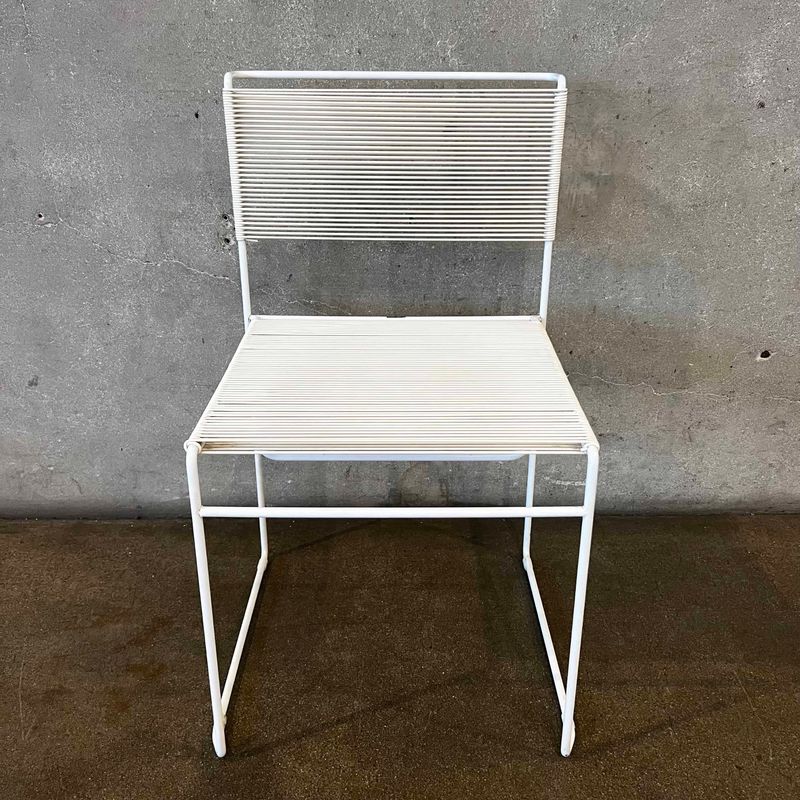
Summers at my cousin’s pool meant fighting over who got to sit in the bouncy spaghetti chairs. These playful patio pieces were woven with colorful strips of plastic that gave slightly when you sat down—like sitting on a friendly trampoline!
The chairs featured tubular aluminum frames wrapped with PVC strips in bright, candy-colored hues that could withstand sun and rain. Their name came from the tangled, noodle-like appearance of the webbing, which created a surprisingly comfortable, slightly flexible seat.
Perfect for outdoor entertaining during America’s backyard barbecue boom, these affordable chairs popped up around kidney-shaped pools and on patios nationwide. Their cheerful presence signaled the casual outdoor living revolution of suburban life.
7. Hi-Fi Consoles

Saturday nights at Uncle Frank’s house meant gathering around his massive hi-fi console to spin the latest Elvis records. These wooden behemoths were part furniture, part entertainment center, and complete status symbols.
Stretching six feet or longer, hi-fi consoles housed record players, radio tuners, and speakers behind fabric panels or sliding doors. Manufacturers like Zenith and Magnavox crafted these music machines in walnut, maple, or mahogany veneers with tapered legs and brass hardware.
The top surface doubled as display space for family photos or cocktail service during parties. For suburban families, these substantial pieces represented the convergence of technology and fine furniture—the mid-century equivalent of today’s home theater systems.
8. Tanker Desks
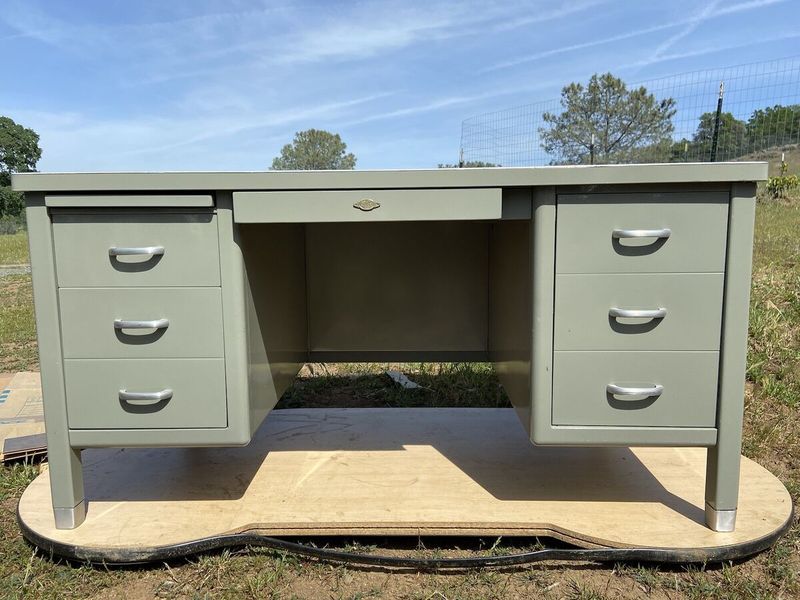
Built like battleships and nearly as indestructible, tanker desks ruled American home offices and school administration buildings. My school principal had one that I was certain could survive a nuclear blast!
Manufactured primarily by Steelcase and McDowell-Craig, these industrial workhorses featured welded steel construction with rounded edges and multiple drawers. Their enameled metal surfaces came in olive green, gray, or desert tan—colors borrowed directly from military equipment of the era.
Originally designed for government and business use during WWII, tanker desks migrated to suburban homes during the post-war period. Their sturdy construction and ample storage made them perfect command centers for managing household finances and correspondence.
9. Jetsons-Style Floating Cabinets
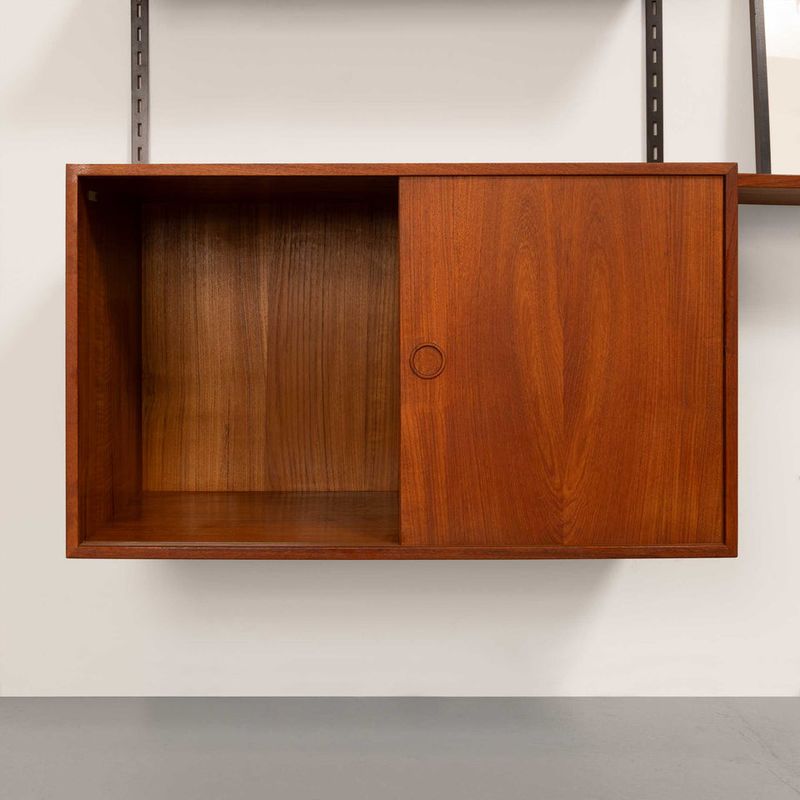
Floating like magic against the wall, these suspended storage units had my childhood friends convinced my family was secretly from the future. We weren’t—we just had what designers called ‘floating cabinets.’
Mounted directly to walls without visible supports, these shelving units and credenzas appeared to defy gravity. Their clean-lined boxes, typically crafted from teak, walnut, or rosewood, featured sliding doors or drop-down fronts concealing storage space for dishes, linens, or entertainment equipment.
Pioneered by Scandinavian designers like Poul Cadovius and his Royal System, these modular units allowed homeowners to configure custom storage solutions. The floating design made cleaning underneath a breeze—a practical benefit that complemented their space-age aesthetic.
10. Lucite Furnishings
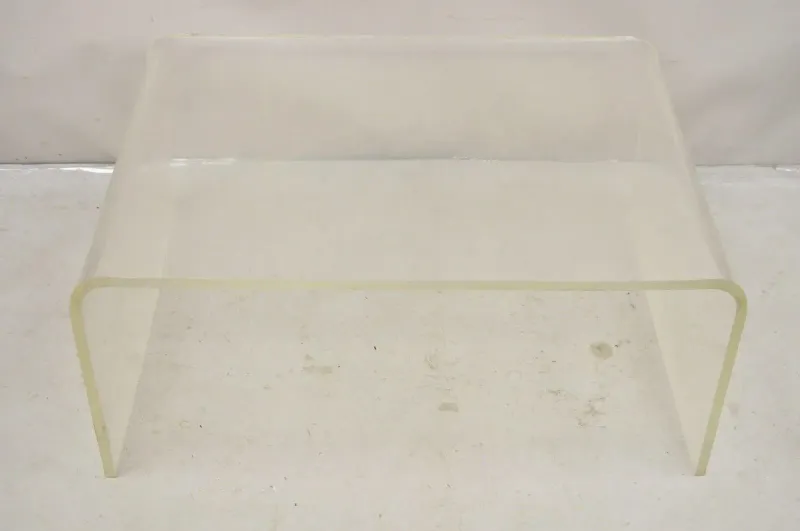
The first time I visited my fashionable aunt’s apartment, I nearly walked straight into her coffee table—it was completely transparent! Lucite furniture brought Hollywood glamour into everyday homes during the mid-century period.
This crystal-clear acrylic material allowed designers to create tables, chairs, and accessories that seemed to disappear in a room. Waterfall edges, where the material curved in one continuous piece, became signature elements of these ghostly furnishings.
Particularly popular in smaller spaces where visual clutter needed minimizing, Lucite pieces added sophistication without visual weight. These transparent treasures often mixed with traditional materials like brass or wood, creating striking contrasts that epitomized the era’s experimental spirit.
11. Barrel Chairs

Round and ready for relaxation, barrel chairs wrapped their occupants in a cozy cylinder of comfort. My grandparents had matching ones in burnt orange velvet that made me feel like I was sitting inside a giant hug!
Defined by their semi-circular backs that continued to form the armrests, these chairs created a distinctive drum or barrel shape. Upholstered in bold fabrics ranging from nubby tweeds to glossy vinyls, they often swiveled on hidden mechanisms—adding an element of fun that delighted both kids and adults.
Milo Baughman popularized high-end versions for Thayer Coggin, while more affordable models appeared in department store showrooms nationwide. Their compact footprint made them perfect for the smaller living rooms of post-war tract homes.
12. Heywood-Wakefield Dogbone Chairs

The chairs around my grandmother’s dining table had these weird cutouts in the backrest that my older brother called ‘doggie doors.’ Years later, I discovered they were actually coveted Heywood-Wakefield Dogbone chairs!
Named for the distinctive bone-shaped cutout in their solid wood backrests, these dining chairs exemplified the company’s signature ‘Modern’ line. Crafted from blonde maple or birch with a proprietary finish called ‘Wheat’ or ‘Champagne,’ they featured gently curved seats and subtly tapered legs.
The cutout served both aesthetic and practical purposes—creating visual interest while making the chairs easier to move. Their sturdy construction and timeless design have made them among the most collectible pieces of mid-century suburban furniture today.
13. Formica Dinette Sets
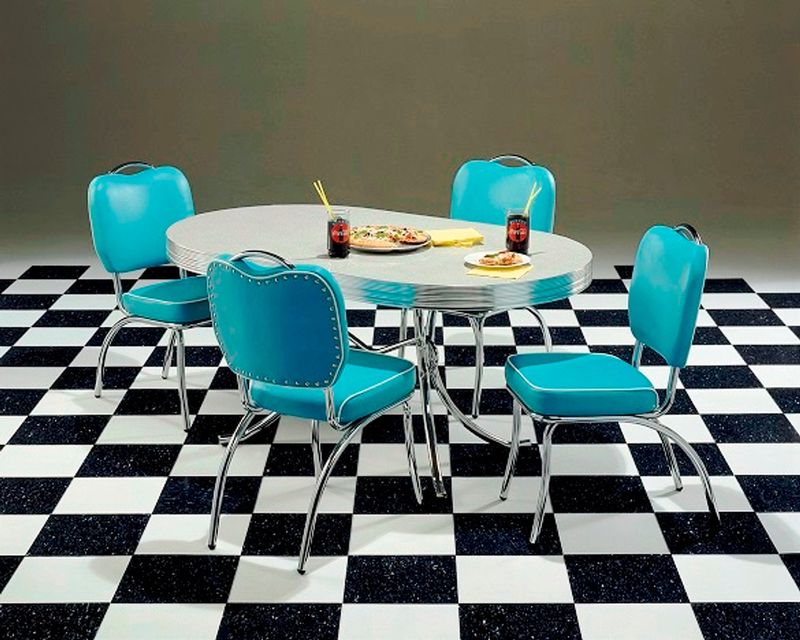
Chrome and color exploded in suburban kitchens when Formica dinette sets arrived on the scene. Our family’s turquoise and white set witnessed thousands of hurried breakfasts and marathon Monopoly games throughout my childhood.
These cheerful dining sets featured tables with heat-resistant laminate tops in candy colors or atomic patterns, supported by tubular metal legs with adjustable floor glides. Matching chairs combined vinyl upholstery with chrome frames, often incorporating decorative metal work on the backrests.
Manufacturers like Daystrom and Douglas produced countless variations to suit every kitchen color scheme. The sets’ durability made them perfect for growing families, while their wipe-clean surfaces handled spilled milk and art projects with equal ease—practical luxury for the modern homemaker.
14. Rattan Peacock Chairs
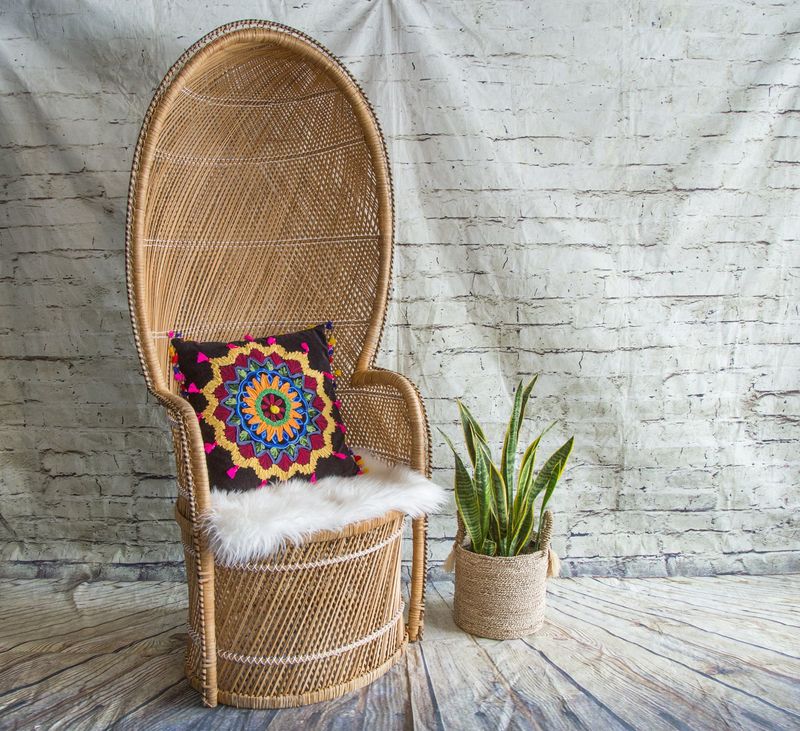
Royalty for your rumpus room! Rattan peacock chairs transformed ordinary homeowners into throne-sitting monarchs. My friend’s mother had one in their Florida room where she’d sit like a queen, fanning herself dramatically on summer afternoons.
These majestic seats featured tall, flared backs woven from natural rattan into intricate fan patterns. Their elaborate, throne-like appearance belied their relatively lightweight construction, making them easy to move between indoor and outdoor spaces.
Originally from the Philippines, peacock chairs gained mainstream popularity through Hollywood publicity photos of stars like Cher and Brigitte Bardot. In suburban homes, they added exotic flair to sunrooms and patios, embodying the mid-century fascination with tropical motifs and casual California living.
15. Bamboo Tiki Bars
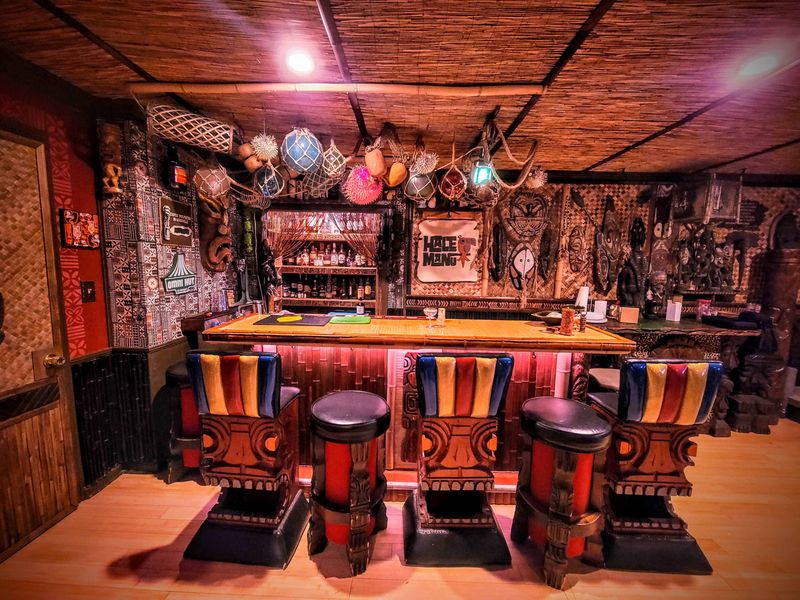
Nothing says ‘suburban escapism’ quite like a basement tiki bar! Uncle Rick’s bamboo masterpiece hosted legendary neighborhood parties where the adults sipped mysterious concoctions while wearing Hawaiian shirts.
These home bars featured bamboo or rattan construction with thatched roofs, often incorporating carved tiki faces and other Polynesian-inspired details. Complete bar setups included shelving for glasses, built-in bottle storage, and a countertop for mixing drinks.
The post-war tiki craze, fueled by returning Pacific theater veterans and establishments like Trader Vic’s, brought these tropical fantasies into basement rec rooms across America. Homeowners embraced these playful pieces as symbols of exotic leisure—bringing vacation vibes to everyday life in split-level suburbia.
16. Convertible Castro Sofas

By day, an innocent sofa—by night, a guest bed ready for action! The Castro Convertible was suburban hospitality’s secret weapon. ‘So easy, even a child can open it’ went their famous slogan, though my seven-year-old self never managed the trick without pinching my fingers.
These ingenious pieces concealed full-sized mattresses within their stylish exteriors. A simple pull on the front panel revealed a folded bed that glided smoothly into sleeping position—a mechanical marvel that delighted visitors and saved countless spare rooms from existing solely for occasional guests.
Available in fashionable upholstery options from tweedy wools to vinyl, Castro Convertibles solved the space dilemma for growing families in modest homes. Their ubiquitous television commercials made them household names throughout mid-century America.
17. Kidney-Shaped Dressing Tables
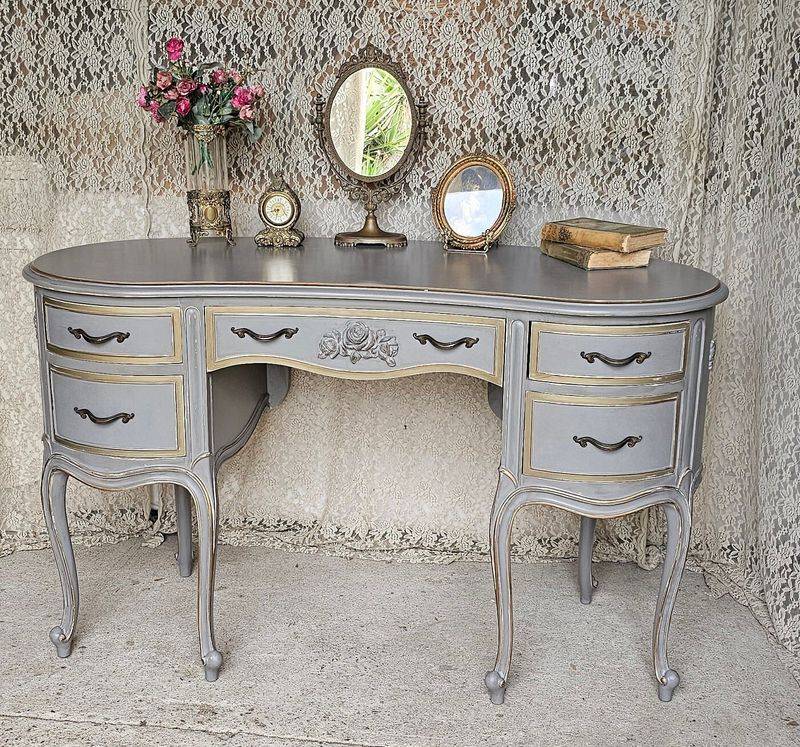
Every suburban princess deserved her own vanity kingdom! My older sister’s kidney-shaped dressing table was her teenage sanctuary—a magical place where she transformed herself before school dances while I watched in awe.
These feminine pieces featured curved tops resembling their namesake organ, often with attached mirrors and matching upholstered stools. Delicate legs with brass ferrules supported slim drawers for cosmetics and jewelry storage. Manufacturers like Bassett and Drexel offered them in pastel-painted finishes or light woods like maple and birch.
Popular in teenage girls’ rooms and master bedrooms alike, these vanities represented a dedicated space for women’s beauty rituals—a small luxury that acknowledged the importance of self-care in the idealized mid-century home.
18. Vinyl Bean Bag Chairs

The rebellious teenager of furniture history! Bean bag chairs crashed into conservative living rooms like aliens from a cooler planet. I begged for one for my 10th birthday and promptly disappeared into its squishy embrace for entire weekends of comic book reading.
Filled with polystyrene beads and covered in colorful vinyl, these amorphous seating blobs conformed to any body position. Their casual nature rejected the rigid formality of traditional furniture—perfect for the changing social dynamics of the late mid-century period.
Introduced in 1969 by Italian designers Gatti, Paolini, and Teodoro as the ‘Sacco,’ bean bags quickly spawned countless imitations that found homes in rec rooms, bedrooms, and dorm rooms across America. They embodied the era’s growing informality and youth-focused design.
